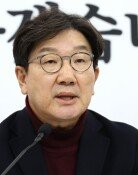How sanctuaries crumble down
How sanctuaries crumble down
Posted September. 04, 2020 08:27,
Updated September. 04, 2020 08:27

In May 2010, this journalist visited Bangkok for a business trip when Thailand was gripped by bloodshed between the anti-government protesters and pro-government factions. The city was practically at war. Places were set ablaze, and sporadic gunshots filled the air. The group of protesters I met was called the “Red Shirt,” and most of them were innocent-looking peasants. They were supporters of Thaksin Shinawatra, the then prime minister of Thailand who pursued policies designed to benefit the poor. The prime minister stepped down owing to the opposition of the “Yellow Shirt” protesters, who are mostly under the middle-income bracket, and the military coup, and their accumulated complaints erupted into the protest. The government mobilized military police and oppressed the crowd, leaving 91 dead.
The anti-government protest is on the rise in Thailand yet again. Since mid-July, protests occurred in more than 55 out of the country’s 76 local municipalities. The rally held at the center of Bangkok on August 16 gathered about 20,000 people. Some of their core demands include the resignation of the current administration, constitutional revision, and a halt to the oppression on opposition parties. More or less the same with the demands from the previous rallies.
There is a salient difference this time, however. Those who drive such movements have changed. In the past, the main motor of protests was the poor and peasants, but now younger people and students are at the center of it. Many of them are the offspring of “Yellow Shirt” protesters.
It was the general elections in March last year that they were awakened to reality. Some 7.3 million voters under the age of 25 cast their ballot for the first time. The nascent Future Forward Party was wildly popular with youth population thanks to their pledge to wipe out the legacy of coup and promote transparency and was catapulted into becoming the third biggest party. Under the pressure from the junta, in November last year, the constitutional court unseated Thanathorn Juangroongruangkit, the chairman of the Future Forward Party, and disbanded his party in February this year.
The frustration of the youth was projected towards the royal family, beyond the government and the military junta. “Maha Vajiralongkorn, the king of Thailand, is trying to take the center stage of realpolitik by expanding his influence across politics, military and the economy,” points out Joshua Kurlantzick, the fellow at the Council on Foreign Relations. “He is not enjoying the level of public popularity his father received as he has lost much of it for his frequent overseas trips and scandals since he was a crown prince.”
Sanctuaries are formed when they have something to preserve. When the value and the role of sanctuaries change over time, they inevitably face challenges. Serving as the bedrock of the people, the Thai royal family has been the subject of respect under its solid constitutional monarchy system. While the royals in Thailand are still subjects of awe and admiration, the Financial Times analyzed that they have now entered the realm of social discussion following the latest rounds of protests in the country. And that is how the bulwark of sanctuaries crumbles down.
Taeck-Dong Chang will71@donga.com
Headline News
- Joint investigation headquarters asks Yoon to appear at the investigation office
- KDIC colonel: Cable ties and hoods to control NEC staff were prepared
- Results of real estate development diverged by accessibility to Gangnam
- New budget proposal reflecting Trump’s demand rejected
- Son Heung-min scores winning corner kick







